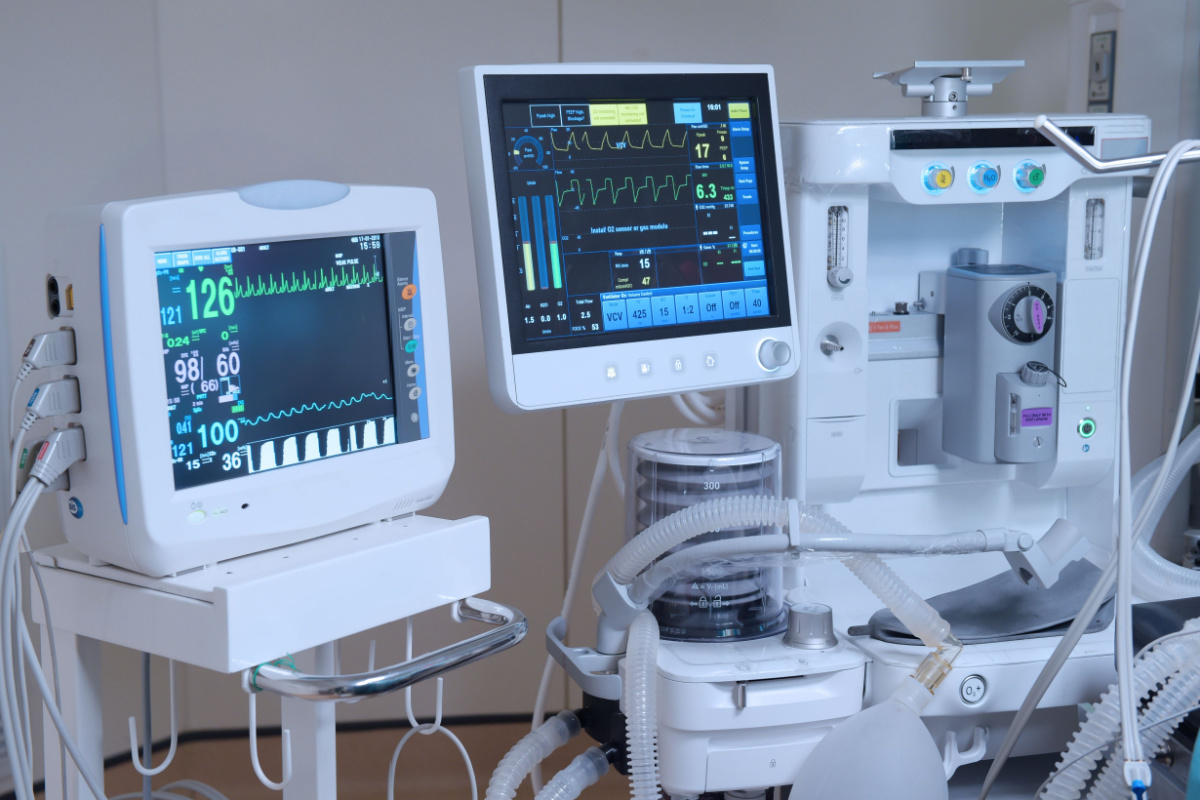It is estimated that starting a medical practice from the ground up can cost anywhere from under $100,000 to well over $1 million. The medical equipment alone can cost upwards of $500,000.
 So, how can doctors find funding for their medical practices? Most healthcare professionals turn to medical loans to cover property acquisition costs, equipment purchases, and even advertising and marketing expenses.
So, how can doctors find funding for their medical practices? Most healthcare professionals turn to medical loans to cover property acquisition costs, equipment purchases, and even advertising and marketing expenses.
Dive into our comprehensive guide on medical practice loans, tailored specifically for doctors and physicians seeking to open their own practice or elevate their existing clinic.
Medical practice loans are designed to offer healthcare professionals the funding they need to start or grow their medical practice. They can also help finance the acquisition or purchase of an existing business.
Most of these loans are designed for medical professionals already practicing or are licensed and starting a business. The total amount that healthcare professionals can borrow for startup medical practice loans varies from one lender to another. However, the amount may range between $25,000 and $5 million. Also, the loan may be secured or unsecured, depending on the lender.
On average, medical practice loans will have an interest rate between 5% and 30% and specific interest rates are often dictated by creditworthiness, lender, and requested financing amount.
Medical practitioners can also use the loan to cover staff salaries, medical equipment, cash flow fluctuations, and office renovations. Most commonly, general or family physicians and specialized doctors, such as dermatologists and pediatricians, use medical business loans. That’s why they are often referred to as “business loans for doctors” or “loans for physicians.”
Loans for medical professionals can be used for a variety of purposes. Let’s take a look at some of the most popular uses of medical practice loans:
Starting a medical practice requires significant capital. When founding your business, some of your major expenses will likely include:
You can cover these initial costs to get your business off the ground. If you plan to use a medical practice loan for startup costs, make sure to keep a detailed expense record to mitigate and prevent overspending.
If you don’t want to start your business from scratch, you can always try acquiring an existing medical practice. A medical practice loan can help you purchase an existing business, including its equipment and inventory.
 However, purchasing an existing business may be a bit more expensive, especially if it is a reputable establishment with loyal customers.
However, purchasing an existing business may be a bit more expensive, especially if it is a reputable establishment with loyal customers.
Another use for medical business loans is maintaining the inventory necessary for treating patients. Equipment such as exam tables, x-ray imaging machines, or an ambulatory vehicle can be some of the most significant expenses you will have to cover when running your medical practice. Medical practice funding can support larger expenses that can contribute to patient care and grow your business.
Equipment loans are often secured with the equipment itself. This means the equipment is used as collateral to secure the loan. As a result, the equipment can be repossessed during defaults. Some lenders may also require a down payment of around 10% to 20%.
As your medical practice expands, managing all its aspects alone can become overwhelming. However, salaries for additional support staff will cost around $3,000 monthly.
A medical practice loan can provide the necessary funds to hire additional medical professionals and administrative staff. This loan ensures you can onboard new team members and maintain smooth operations without financial strain.
Staying ahead of the curve in business can help keep your operation modern and credible, and maintaining routine upgrades and renovations to your spaces is one step toward that. If your office needs repairs or upgrades, medical practice loans can give you the flexibility to make the necessary changes to your business space and continue to provide excellent service.
When seeking medical practice funding, the specific prerequisites can differ depending on the lender.
 However, there are several common elements that most providers will evaluate:
However, there are several common elements that most providers will evaluate:
The most common medical practice loans are term loans and business lines of credit. However, different companies have different needs, and it’s important to research loan options before committing to one. So, let’s take a closer at the different funding options to help you select the right fit.
Term loans provide a lump sum of capital that is repaid in regular installments with interest. For medical practices, these loans typically range from $25,000 to $500,000. Short-term loans last six to 18 months, while long-term ones range from three to 25 years.
Terms loans for medical professionals can help cover expenses like equipment, expansion, or hiring. Some lenders may have specific restrictions, and most will evaluate a practice's financial health, credit history, and profitability. This may impact your interest rate as well, which typically ranges from 7% to 30% for a term loan.
Benefits may include predictable repayments, potential tax deductions on interest, and financial stability, often with competitive fixed or variable rates.
Business lines of credit provide a flexible source of capital, allowing businesses to borrow up to a set credit limit as needs arise. For many businesses, the credit limits can range from $10,000 to $1 million.
The primary distinction between a business line of credit and other financial instruments is its revolving nature. This financing option is similar to a credit card – once you repay any borrowed amount, those funds become available again. However, business lines of credit often come with higher funding amounts and potentially lower interest rates. The flexibility inherent in a line of credit means businesses only pay interest on the amount they've borrowed, not the total credit limit.
This form of financing is typically used to manage short-term capital needs, like covering cash flow gaps, seasonal expenses, or unforeseen operational costs. Lenders evaluate the company's financial health, credit history, and profitability when determining credit limits.
Benefits of a business line of credit include its adaptability to varied financial needs and potential tax deductions on interest. Medical professionals also do not need to reapply for financing each time they need to borrow money. Once the used amount is repaid, the funds are available again.
Equipment financing provides clinics with capital to purchase necessary equipment. In many industries, including medical practices, loan amounts depend on the cost of the equipment but vary between a few hundred dollars to tens of thousands. Typical interest rates for equipment financing fall between 6% and 12%.
 While some medical devices might only cost a few thousand dollars, complex machinery could exceed six figures. These loans are often secured, meaning the purchased equipment itself serves as collateral for the loan. If the borrower defaults, the lender can seize the equipment to recoup some or all of their losses. The typical repayment term for an equipment loan is anywhere between three and 10 years.
While some medical devices might only cost a few thousand dollars, complex machinery could exceed six figures. These loans are often secured, meaning the purchased equipment itself serves as collateral for the loan. If the borrower defaults, the lender can seize the equipment to recoup some or all of their losses. The typical repayment term for an equipment loan is anywhere between three and 10 years.
These loans can be a win-win for clinics looking to upgrade their equipment without paying in full upfront. Medical practices can retain their cash flow for operational needs while still obtaining the equipment needed to improve their services.
The Small Business Administration (SBA) is a federal agency that aims to accelerate the U.S. economy by helping small business owners access capital. SBA loans usually range from $25,000 to $500,000, but through programs like the 7(a)-loan program, qualified businesses can secure up to $5 million. Funds from an SBA loan can be used for a variety of purposes, including buying medical equipment or buying the property to open the clinic.
The SBA does not provide medical loans directly to clinics. Instead, the SBA works with banks and credit unions to guarantee a portion of the loan on behalf of the clinic. As a result, some lenders may be willing to offer more favorable interest rates to medical borrowers.
Repayment terms for SBA loans can vary from six months to up to 25 years. The perks of an SBA loan can include predictable payments, potential tax deductions on interest, and competitive rates, typically between 2% and 6%.
When it comes to securing a loan for your medical practice, you have a wealth of options. Whether you're launching your own clinic, investing in advanced medical equipment, or giving your office a fresh makeover, a medical practice loan may be the tool to help you bring your medical practice to the next level.
Still curious how medical practice loans work? Here are answers to some common questions:
Medical practitioners such as physicians, plastic surgeons, psychologists, psychiatrists, chiropractors, optometrists, ophthalmologists, pediatricians, dermatologists, chiropractors, and reiki professionals may apply for medical practice financing.
Medical practice loans can often be used for a variety of medical business expenses. However, the loan provider may impose restrictions if you try to use the money to fund non-business-related expenses or specific ventures within your practice. For example, some lenders may only allow loans to be used for equipment rather than advertising or marketing.
Most lenders and financing companies conduct a credit check. However, if you don’t have a perfect credit score, you may still qualify for medical loans. When determining eligibility, some lenders may take business capital and income into consideration alongside your personal or business credit score.
Most of the time, lenders require that you have been in business for at least one year. Nonetheless, you may find some loan providers willing to work with people who are still in residency or planning to open their first practice.
Whether you need to secure your medical practice loan with collateral depends on your loan provider. Some may require a lien on your business assets and a personal guaranty. Collateral can include equipment, inventory, accounts receivable, and vehicles. However, remember that the lending company can legally repossess your collateral if you default on your loan.